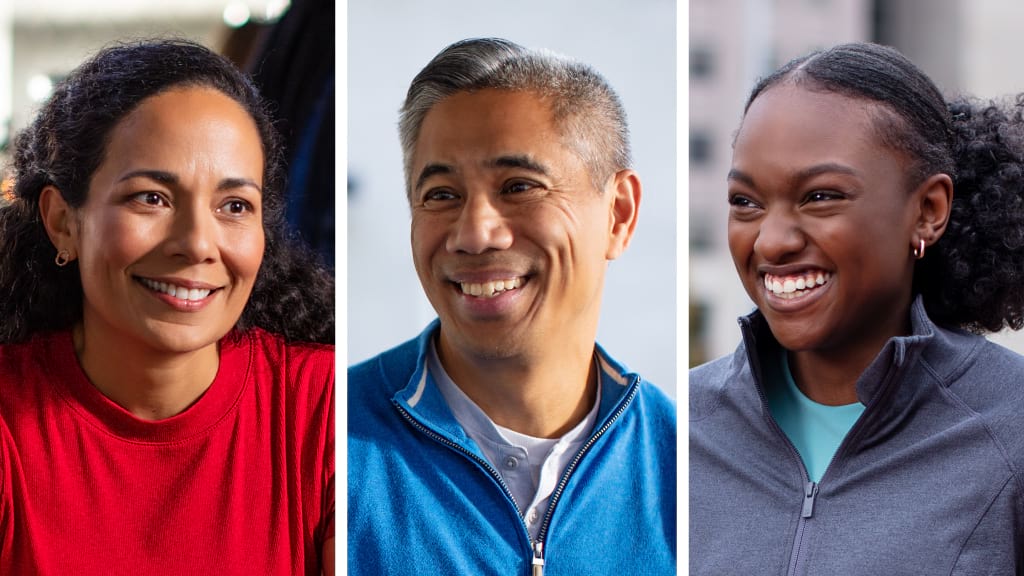Developing new medicines and care options wouldn’t be possible without clinical trials. That’s why diversity in the research is so critical - we need to have a diverse pool of participants to ensure that the treatment options are as effective as possible for each patient, no matter their age, sex, race, ethnicity, and many other factors.
To discuss what Lilly is doing to increase diversity in clinical trials, we spoke with two outstanding women who are leading the charge: Stacey Bledsoe, Advisor - Global Medical Engagement and Outreach, and Natalie Cheung Rotelli, Advisor of Diversity in Clinical Trials. Read on for the full conversation.

Background
Interviewer: Tell us about your current roles and what brought you to Lilly.
Stacey Bledsoe: I have a Master’s degree in Nursing and was a Newborn ICU nurse for years. Once I had kids, I came to Lilly because I was seeking better work-life balance and the opportunity to have a broader impact helping patients.
I’ve been working here for 18 years in various roles bringing both healthcare professional and patient feedback back to Lilly. As a former nurse, I appreciated that my end goal didn’t change once I began working at Lilly - it’s always about helping and connecting with the patients. I was born and raised in the inner city of Indianapolis, so the opportunity to work at Lilly was life-changing for me. I grew up 10 minutes away from the campus and have seen some of the issues related to health disparities, which has driven my passion for this work. I’ve also seen the impact that Lilly has had on the community firsthand, so I know my work can make a difference.
Natalie Cheung Rotelli: I grew up in a small North Carolina town, and my family was one of the only Asian families around. People tended to hang out with people of their same race, so I didn’t really get close to most people. That led me to be very passionate about diversity and inclusion. As a statistician in academia, government, and nonprofit, I knew that I wanted to find a similar role when I moved to Indiana. That search led me to work at Lilly.
I was impressed with Lilly’s Statistics department and I liked the research. I have been at Lilly since 2005 and have had mainly data-focused roles, so when the opportunity to work on Lilly’s diversity strategy arose, I knew I could use my experience to follow the data and determine how to make meaningful change.
Why Diversity in Clinical Trials is Important
Interviewer: It’s no secret that clinical trials have an issue with lacking diversity. Why is this an important initiative for Lilly to increase diversity in clinical trials?
Stacey: I saw the need for greater clinical trial education firsthand. One of my family members was diagnosed with lung cancer in 2015, and when I asked the doctor about clinical trials as an option, she said that she didn’t know much about them and that she could do some research and get back to me. Mind you, this was at a major hospital. Before that, I’d also lost another family member to breast cancer, which she battled for almost 10 years without clinical trials ever getting brought up as an option.
I started to look into what Lilly was doing in terms of increasing diversity in clinical trials, and I brought it up with my leadership team.
Leadership gave me permission to explore this space, so I started a grassroots effort by looking at what other pharmaceutical companies were doing and sitting on the Harvard Multi-Regional Clinical Trials (MRCT) Diversity Council on behalf of Lilly. Diving into the research helped me unearth what we should be doing as an organization.
Then COVID-19 hit. As we looked at the data, we saw that the Black community was impacted and dying at a higher rate. Additionally, the US Senate sent a letter to pharmaceutical companies and clinical trial sponsors, including Lilly, expecting inclusion of minority participants in COVID-19 clinical trials, as well as in our clinical trials overall.
We then worked together to ensure that we put goals in place that were driven by the data and the literature.
Natalie: We have all this data that we could use to understand where we are in terms of diversity and where we want to be. We have clear goals, tools, resources, headcount, and leadership that cares. We want to ensure that our strategy institutionalizes the inclusion of diverse populations into our clinical trial planning and execution practices.
It can be overwhelming, but it’s an incredible opportunity.
Stacey: Our work ladders up to Lilly’s broader Racial Justice Initiative. Their plan is far-reaching and addresses various components of racial justice. To achieve health equity, we need to ensure that our medicines work for everybody. The start to understanding all of this is through making sure our clinical trial participants represent our diverse population.
We also saw that we had an opportunity to do better in this area, and that others do too. Most pharmaceutical companies have a goal to increase diversity in their clinical trials, but we all figured out that this is not going to be something that is easy. It’s systemic, and the solution will need to be able to be replicated by everyone.
Natalie: I agree; it highlighted that we’re all starting from the same place. We want all boats to rise, meaning that our goal is to ensure we contribute to greater diversity in clinical trials, and Lilly’s success will be part of everyone’s success in this area.
Interviewer: COVID-19 amplified existing health disparities in minority communities, with a disproportionate impact on Black Americans and other racial/ethnic minority populations. What are some of the important lessons learned for Lilly with regard to diversity and the COVID clinical trial experience?
Natalie: COVID-19 affected the African American and Latinx communities 3.5-4x more than everyone else, so it certainly exposed the need for rapid change.
Events of racial injustice happened during the pandemic, and I realized how blind I was to a lot of it in my life. Once it was finally uncovered, we began to come together as a community. The collaboration was moving, but this made it clear there is a lot more that we can do.
It’s been a year, and Stacey has helped open my eyes to so much. I’m learning something new every day, not just in terms of clinical trial operations, but that this is one part of health equity, which is one part of racial justice.
Lilly’s Diversity Initiatives and Goals
Interviewer: Can you tell us about how you formulated the goals for Lilly’s diversity initiatives? How did you narrow them down to the three that you chose?
Stacey: For us, it was about going back to the data, understanding what researchers have previously said about what it takes to move the needle, putting it all down on paper, and refining it. I also want to highlight that this was a cross-functional effort. We all collaborated to determine what our plan should look like and worked hard to make sure the goals reflected recommendations from the literature. Leadership challenged us and continues to ask how Lilly can help move this forward.
Interviewer: What are your team’s focuses for increasing diversity in clinical trials in the short term? In the long term?
Natalie: In the short term, we will engage with ongoing trials where diseases disproportionately affect minority populations. We’re working to understand the current clinical trial landscape and see where there are opportunities to increase diversity. We’re learning from ongoing pilots as well to see what works and what is sustainable. Our other short-term goal is to engage with upcoming clinical trials and implement tactics to increase diversity in those as well.
The long-term goals are to achieve equitable representation in our clinical trials and work with a diverse group of investigators, and to have our tactics to achieve these goals institutionalized into our processes.
Stacey: In addition to our goals for Lilly internally, we also have our external-focused goals to engage with minority communities to understand the barriers to participation, build trust, and educate them around the importance of participating in medical research.
We’re working in the community, understanding their needs, and collaborating with them and like-minded organizations to move this topic forward. It’s important to have lasting, sustainable solutions; ones that make life better for all.
Read about Lilly’s commitment to diversity in clinical trials on Lilly.com or learn more about Lilly’s overarching diversity & inclusion efforts.
To see more stories in clinical trials and engage with us on diversity in clinical trials, be sure to follow us on Facebook and Twitter.

